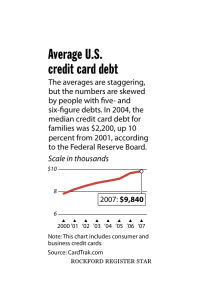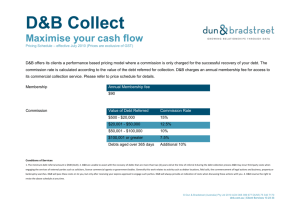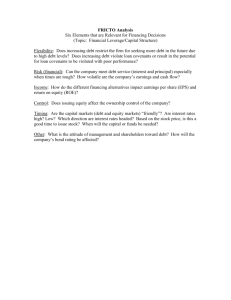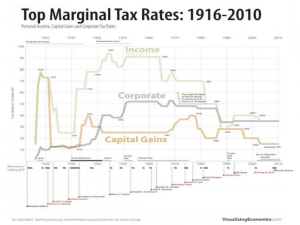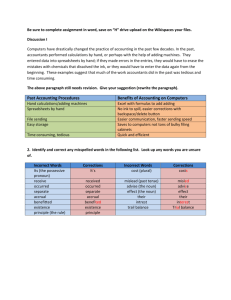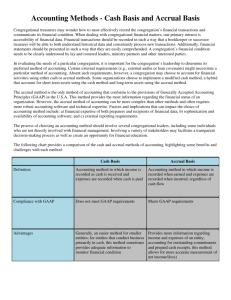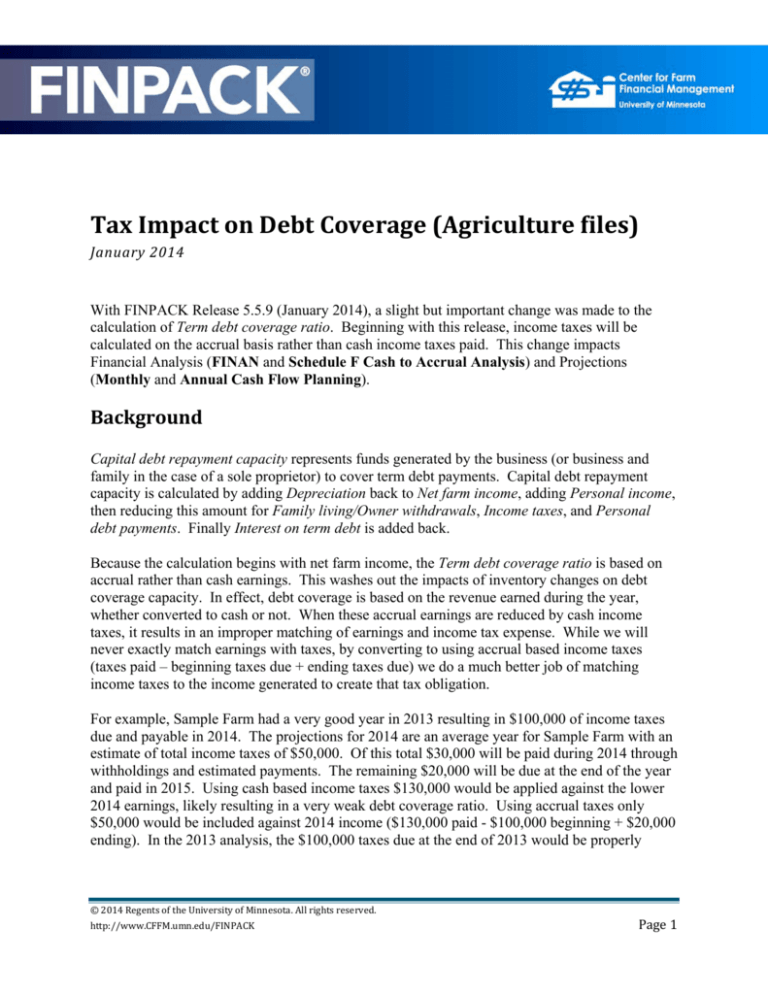
TaxImpactonDebtCoverage(Agriculturefiles)
January2014
With FINPACK Release 5.5.9 (January 2014), a slight but important change was made to the
calculation of Term debt coverage ratio. Beginning with this release, income taxes will be
calculated on the accrual basis rather than cash income taxes paid. This change impacts
Financial Analysis (FINAN and Schedule F Cash to Accrual Analysis) and Projections
(Monthly and Annual Cash Flow Planning).
Background
Capital debt repayment capacity represents funds generated by the business (or business and
family in the case of a sole proprietor) to cover term debt payments. Capital debt repayment
capacity is calculated by adding Depreciation back to Net farm income, adding Personal income,
then reducing this amount for Family living/Owner withdrawals, Income taxes, and Personal
debt payments. Finally Interest on term debt is added back.
Because the calculation begins with net farm income, the Term debt coverage ratio is based on
accrual rather than cash earnings. This washes out the impacts of inventory changes on debt
coverage capacity. In effect, debt coverage is based on the revenue earned during the year,
whether converted to cash or not. When these accrual earnings are reduced by cash income
taxes, it results in an improper matching of earnings and income tax expense. While we will
never exactly match earnings with taxes, by converting to using accrual based income taxes
(taxes paid – beginning taxes due + ending taxes due) we do a much better job of matching
income taxes to the income generated to create that tax obligation.
For example, Sample Farm had a very good year in 2013 resulting in $100,000 of income taxes
due and payable in 2014. The projections for 2014 are an average year for Sample Farm with an
estimate of total income taxes of $50,000. Of this total $30,000 will be paid during 2014 through
withholdings and estimated payments. The remaining $20,000 will be due at the end of the year
and paid in 2015. Using cash based income taxes $130,000 would be applied against the lower
2014 earnings, likely resulting in a very weak debt coverage ratio. Using accrual taxes only
$50,000 would be included against 2014 income ($130,000 paid - $100,000 beginning + $20,000
ending). In the 2013 analysis, the $100,000 taxes due at the end of 2013 would be properly
©2014RegentsoftheUniversityofMinnesota.Allrightsreserved.
http://www.CFFM.umn.edu/FINPACK
Page1
matched with the higher 2013 income. The table below shows this example and the different
impact of cash and accrual income taxes on term debt coverage.
Cash (a) 2013 income tax payable in 2014 (Beginning personal income tax payable) Accrual 100,000 (b) Payment of 2013 income tax (c) Payment of estimated 2014 taxes (d) 2014 income tax payable in 2015 (Ending personal income tax payable) 100,000 100,000 30,000 30,000 20,000 Total income taxes Example Term Debt Coverage Capital debt repayment capacity, before tax Capital debt repayment capacity Term debt payments Term debt coverage 130,000 (b + c) 246,661 116,661 120,798 0.97 50,000 (b + c ‐ a + d)
246,661 196,661 120,798 1.63 Implementation
Many FINPACK users have typically included income taxes payable in Personal accounts
payable on their balance sheets. With this release, Personal income taxes payable has been
added as another account in the Personal Liabilities section of the balance sheet. By entering
income taxes payable in this account for both beginning and ending balance sheets FINPACK
will handle the accrual calculations in FINAN and the Schedule F Cash to Accrual Analysis. For
a FINFLO or Annual Plan, you would enter the income taxes payable on the beginning balance
sheet and estimate ending income taxes payable in the Ending Balance Sheet section of the
FINFLO or Annual Plan.
CautionaryNote
As with any change of this scale there is need for caution. The issue in this case related to the
analysis, either FINAN or Schedule F Cash to Accrual. Moving taxes to this new account will
fix this year’s analysis. However, this year’s beginning balance sheet was last year’s ending
balance sheet. So if you go back and re-run last year’s analysis, the results will incorrectly
calculate accrual based income taxes. There are two suggested solutions:
©2014RegentsoftheUniversityofMinnesota.Allrightsreserved.
http://www.CFFM.umn.edu/FINPACK
Page2
1.
Adjust all balance sheets to move personal income taxes payable to the new account. The
result will be the previous year’s analyses will be adjusted to base debt coverage on accrual
income taxes.
2.
Make a copy of the beginning balance sheet before changing it. Continue to use the
original for the previous year’s analysis. Adjust the copy and use it for the current year’s
analysis. The result will be previous year’s analyses will match the results previously calculated,
with debt coverage based on cash income taxes.
©2014RegentsoftheUniversityofMinnesota.Allrightsreserved.
http://www.CFFM.umn.edu/FINPACK
Page3

